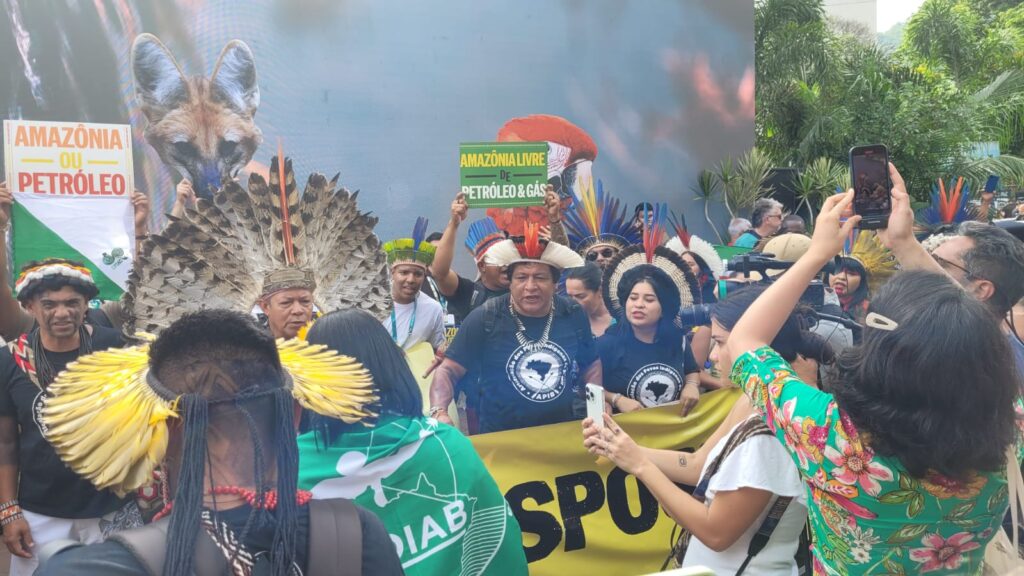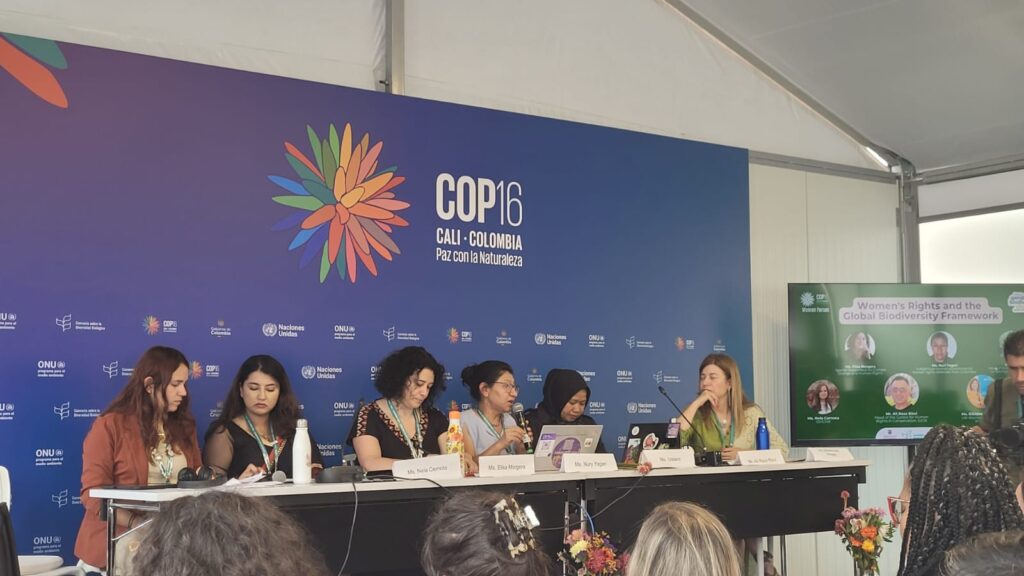By Andressa Scabin
translated by Monique Oestreicher
In 2025, Brazil will host the largest event to discuss how humanity will tackle the climate crisis, which is already a reality worldwide. The 30th United Nations Climate Change Conference will take place in Belém, Pará, in November, with an expected attendance of over 40,000 visitors.
It is only fitting that an event of this magnitude be held in the Amazon, the largest tropical forest in the world, renowned for its crucial role in regulating the global climate. This event will provide a unique opportunity for the voices of riverside, Indigenous, quilombola, and extractivist communities to be heard, allowing them to contribute to important debates about the planet’s future. Additionally, Brazil will have the chance to reaffirm its leadership in climate change negotiations and biodiversity conservation, as it did during the Eco-92 and Rio+20 conferences.
The Conferences of the Parties, known as COPs, are significant events where leaders and representatives from countries that are signatories to international agreements gather to discuss and negotiate actions on critical environmental issues for humanity, such as biodiversity loss and the climate emergency.
While these conferences are globally recognized as essential spaces to address urgent issues, there is considerable debate about the real impact of the agreements made. Questions arise about how many of the proposed goals are actually achieved, the timelines of actions that fail to align with the rapid pace of biodiversity loss and extreme climate events, the redundancy of holding three COPs to address the same planetary threat, and, most importantly, the absence of key countries in international agreements, such as the United States, the second-largest emitter of greenhouse gases in the world.
Last year, the world closely followed two Conferences of the Parties. The first took place in October in Cali, Colombia: the COP-16 of the Convention on Biological Diversity (CBD). The second occurred in November in Baku, Azerbaijan, as the COP-29 of the United Nations Framework Convention on Climate Change (UNFCCC).
The COP-16 on Biodiversity, which I attended as a representative of the Instituto Juruá, focused on implementing the Kunming-Montreal Global Biodiversity Framework. This action plan, established in 2022, outlines 23 goals for the conservation and restoration of ecosystems worldwide. Key topics discussed at the event included the presentation of national strategies and action plans by signatory countries to meet these goals, the need for equitable sharing of benefits derived from biodiversity use, and the mobilization of financial resources necessary to implement the framework.
The event highlighted significant representation from youth and traditional populations in discussion forums, where they shared experiences from their territories. The role of women in biodiversity conservation was also a major topic, underscored in one of the framework’s goals, which calls for encouraging women to actively participate in and lead decisions regarding biodiversity conservation and sustainable use.
One of the main advances of COP-16 was the increased representation of traditional populations in decision-making spaces. This included recognizing the role of Afro-descendants in biodiversity conservation and establishing the Article 8(j) Working Group as a subsidiary body of the CBD. This ensures the formal and ongoing participation of Indigenous peoples and local communities in global biodiversity decisions. Another achievement was the creation of the Cali Fund, a financial mechanism to fairly and equitably distribute resources generated from the use of digital sequence information (DSI) of living organisms. These DSIs are stored in global digital repositories, often sourced from traditional knowledge in biodiversity-rich developing countries, but used by companies in the Global North—primarily in pharmaceutical, cosmetic, and food industries—that concentrate most of the financial benefits from these sectors.
On the other hand, the event concluded with limited results and a lack of consensus regarding funding for the effective implementation of commitments. The Global Biodiversity Fund remains a significant challenge. Although the goal is to raise $20 billion by 2025, only $500 million has been secured so far, primarily from developing countries. Furthermore, the fund continues to be managed by the Global Environment Facility (GEF), a model that some countries argue favors donor nations like the United States, which is not a signatory to the CBD.

Author: Andressa Scabin.
The question of “who will foot the bill” was also the sticking point at COP-29 on Climate, held in Baku, Azerbaijan, in November last year—dubbed the “COP of Climate Financing.” The primary negotiations at this event centered around creating a fund to help Global South countries, those most affected by the climate crisis, adapt their infrastructures to climate events and undertake the energy transition. The initial goal was to raise one trillion dollars annually for the fund, but only 300 billion was secured. Moreover, the only financial mechanism showing rapid progress was the Carbon Market, a highly controversial strategy touted as the main solution to the climate crisis.
Given the modest progress and lack of practical solutions to address the climate crisis during COP-29, we face a massive challenge ahead in Belém this year! Amid the flood of information about COP-30, I came across a phrase that, for me, perfectly encapsulates what COP-30 could represent for the peoples of the forest: “In cabana lands, COP-30 is another fight! Cabanagem is now!” This phrase references the Cabanagem, a popular revolution that occurred in the province of Grão-Pará between 1835 and 1840 against the Portuguese Empire and its systemic social inequalities. It was led by caboclos (mixed-race individuals), Afro-descendants, Indigenous peoples, and riverine communities living in precarious conditions in the Amazon region.

Therefore, I believe our efforts to prepare for hosting an event of this magnitude in our home must focus primarily on ensuring the protagonism of these Amazonian voices in decision-making spaces. May we learn from and build concrete solutions to the climate and biodiversity crises based on the wealth of knowledge from this ancestral resistance.